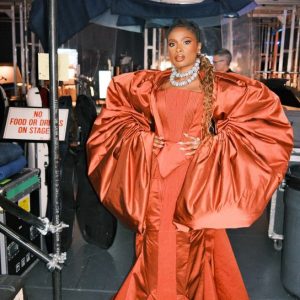The Power & Nuance: A Technical Appreciation of Mary J. Blige’s Vocal Delivery Evolution
By Koalafriend
There are vocalists, and then there is Mary J. Blige — the undisputed Queen of Hip-Hop Soul. Since bursting onto the music scene in the early '90s with her groundbreaking debut album What’s the 411?, Blige has become a gold standard for emotional authenticity, vocal prowess, and soulful delivery. But her magic doesn’t just lie in her raw power — it’s in the nuance.
Now, we’re diving into a technical appreciation of her epic vocal journey — from gritty, heartbreak-infused storytelling to the polished-yet-painstakingly real performances that continue to boycot mediocrity in R&B and soul. Whether you're a die-hard fan or just discovering the depth of her discography, it's time to talk vocals — Mary J. Blige style.
From Raw Emotion to Vocal Precision: A Timeline
Mary’s transformative vocal power didn’t come prepackaged in perfection. And that’s what made her resonate so deeply — her early work felt lived-in, bruised, and boldly unrefined. Tracks like “Real Love” and “You Remind Me” introduced the world not just to a unique voice, but a new way of singing R&B that infused hip-hop’s brash honesty with gospel grit.
In those early days, Mary’s vocals were marked by a rawness — sometimes strained but undeniably compelling. But here’s the tea: that slight imperfection was intentional and essential. She wasn’t trying to impress with whistle tones or melismas. Blige was telling stories from a place of lived experience, using a vocal rasp and dynamic changes to bring every pain, triumph, and truth to life.
As her artistry matured across albums like No More Drama and The Breakthrough, Mary unveiled newly honed breath control, vocal placement, and phrasing characteristics that showed she wasn’t just an emotional force — she was becoming technically pristine.
Mary's Mid-Range Mastery & Controlled Rawness
Fast-forward to the 2000s, and Mary starts flexing more vocal control without compromising her emotional impact. On “Be Without You,” arguably one of her most career-defining tracks, Blige leans into her chest voice with a silky strength that tugs at your soul. She glides through mid-range melodies with grounded fullness, balancing power with intention.
What stands out is her ability to crescendo seamlessly: starting from a soft, aching plea to an emotionally-soaring finish without over-singing. This is a singer in total control of her instrument — she knows where to push, when to pull back. It's this nuanced control that sets her apart from many of her contemporaries.
Live Performances: The True Test of Vocal Evolution
Let’s be real — live vocals don’t lie. And Mary? She passes the mic test time and time again. Watch any of her award show performances (hello, 2022 Super Bowl Halftime Show anyone?) and her command of stage and voice is unshakable.
Unlike the hyper-produced studio versions of some newer artists, Blige brings her all to every line — pushing her voice in moments of climax, then reeling in to whisper-like confessionals without missing a beat.
A standout? Her live performance of “No More Drama” at the 2002 Grammys, where she literally falls to her knees mid-song. That scream-sung bridge? That was pure, calculated vocal explosion — a combo of diaphragmatic support + unrelenting passion. A rollercoaster of emotion made possible by serious vocal technique.
Navigating Timbre & Tone
Blige’s vocal tone has always been one-of-a-kind — husky, textured, and resonant with the kind of soulful ache that carries more than words. But over time, she refined her tonal palette, injecting brightness when needed (think “Just Fine”) while never losing the velvety richness that made songs like “I’m Goin’ Down” soar.
Producers have lauded her ability to shape the tone of her voice to match the story: she darkens her vowels for emotional gravity, flattens vibrato when she needs realism, and opens her throat to raise the power stakes.
And as she's aged, her voice has only gotten better — warmer, richer, deeper. A rare flex in the industry.
The Modern Era: Hits, Harmonies & Vocal Legacy
On recent albums like Good Morning Gorgeous (2022), Mary keeps the vocals fresh and current. Her ad-libs are sharper, her falsetto sprinkled for effect, and her harmonies tighter than ever. Mary doesn’t lean on heavy vocal edits — she still delivers the emotion front and center, refusing to sacrifice soul for perfection.
With tracks like “Rent Money,” Mary lets loose refined vocal riffs that sit just under the beat, a technique many modern R&B acts have adopted. Even in collaboration-heavy tracks, her voice is unmistakable — cutting through the production with that same signature blend of pain, power, and purpose.
Final Notes: The Vocal Blueprint for Modern Soul
Mary J. Blige didn’t just influence a generation of singers — she rewrote how we define great vocals in R&B and hip-hop. Her evolution from raw rough-cut vulnerability to a polished, genre-defining powerhouse is not only a masterclass in vocal growth, but a testimony to authenticity as the real vocal flex.
She taught us that every crack, growl, restraint, and run must serve the emotion. That deep singing isn’t about sounding pretty — it’s about feeling real.
As we look back on her three-decade career, one thing is clear: Mary didn’t just survive the industry — she transformed it. And her voice? It’s the heartbeat of that legacy.
So, if you’re a rising vocalist, music fan, or just a lover of true artistry — take note from the Queen. Because the power and nuance of Mary J. Blige’s voice is more than just sound — it’s soul in motion.
SEO Tags:
Mary J. Blige vocal evolution, R&B vocalists, Mary J. Blige singing style, Mary J. Blige live performance, Mary J. Blige vocal technique, vocal appreciation Mary J. Blige, vocal power and nuance, Mary J. Blige 2024, Queen of Hip-Hop Soul vocals, Mary J. Blige singing analysis
Stay tuned for even more celebrity deep dives, vocal breakdowns, and all things R&B on koalafriend.com!

